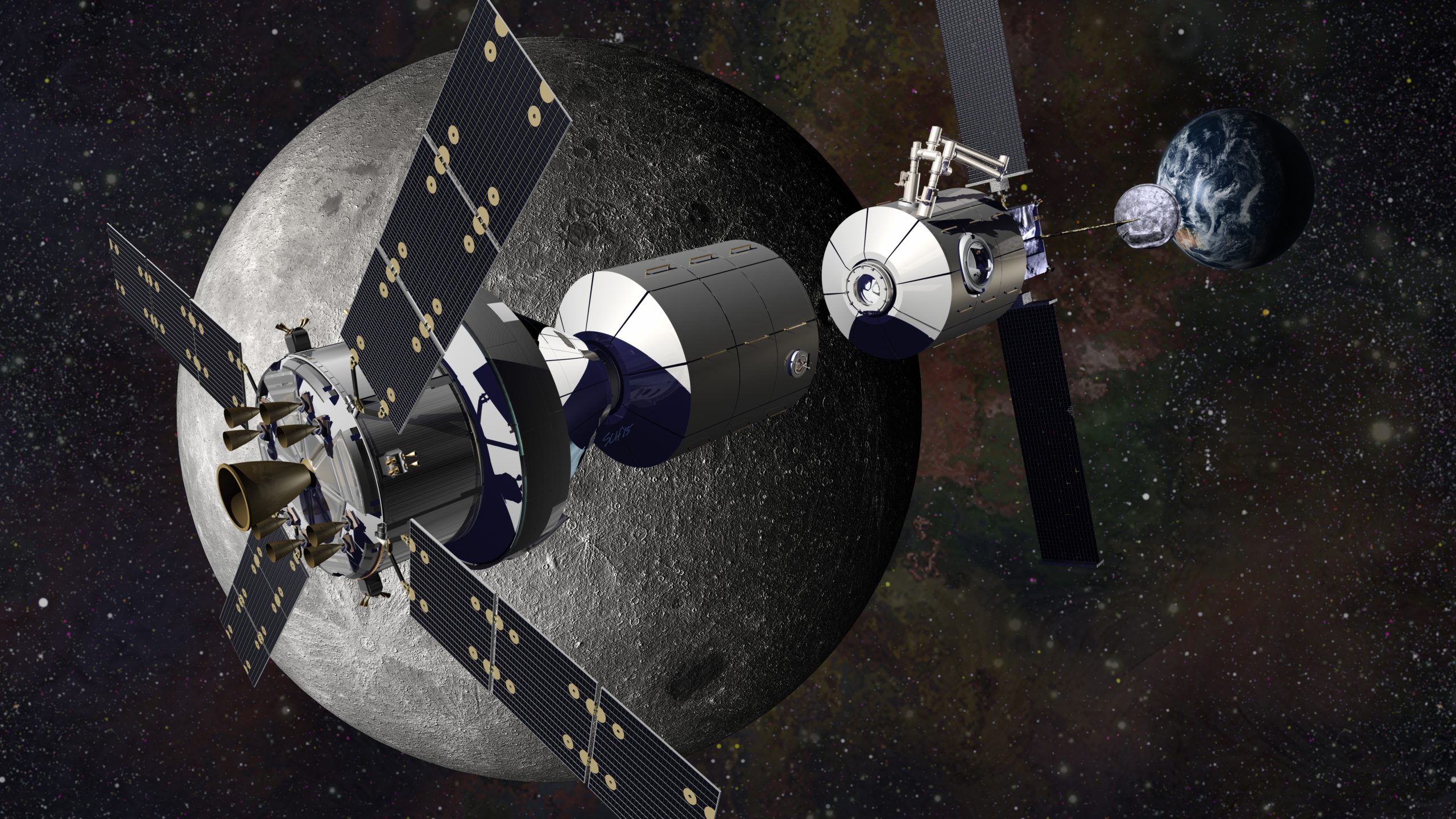
NASA proposes a lunar space station for deep space exploration with construction starting in 2019
NASA is all set to return to the moon after decades. NASA is ready to welcome a new chapter in its space exploration with a new space station that will be stationed around the moon. A NASA representative confirmed NASA’s plans at the Space Symposium conference held on April 19 where he explained about the proposed Lunar Orbital Platform-Gateway for which, NASA is looking for suitable contractors eligible to supply elements for the space station by next year. Per the proposed plan, NASA will launch the space station to the moon around 2022 and then, by 2025, the space station will be fully operational and docking, staging and stop-off point facility for further deep space exploration.
The Lunar Orbital Platform-Gateway will act as a staging point that will enable astronauts to study the surface of the moon which will include searching for signs of extraterrestrial life and other missions. However, once the space station is completed, it will act as a stop-off point towards deep space exploration such as to the Mars which is the highly sought after neighboring planet of Earth. The space station will inhabit four astronauts and cosmonauts at a time throughout the year similar to the environment seen on the International Space Station (ISS). Astronauts aboard the spacecraft will be able to conduct several missions between a period of 30-days on the moon as well as in its vicinity before zooming back to the Earth.
In an interview, Cheryl Warner who is NASA’s Public Affairs Officer, he stated that the space station was released as a concept in March 2017. The U.S. space agency is looking forward to contributors and ISS partners in order to make space station a reality by sharing their knowledge and capabilities. The spacecraft is expected to be launched by the new Space Launch System (SLS) rocket which will provide a seamless liftoff and propel it directly through the Earth’s atmosphere and has been built to facilitate deep space exploration.
Pertaining to its design, the Lunar Orbital Platform-Gateway will have a similar system to the ISS which allows vehicles to dock. The Deep Space Transport Vehicle which will be constructed in the later stage will allow humans to visit Mars which will have docking capability to this lunar space station before continuing its journey to the red planet which would take months to complete. The space station will also have lander to conduct surface missions as well to study lunar surface for instance.
According to the statement released by NASA last month, it asserted that the agency is leaning forward towards the next chapter of deep space exploration where the missions near the moon will help astronauts to test the systems before executing challenging missions that would be made towards destinations like Mars.
NASA has created a lot of buzzes this year alone. The agency appointed its new administrator Jim Bridenstine who was shortlisted by the U.S. Senate and who succeeded Maj. Gen. Charles Frank Bolden Jr. Next, NASA launched its Transiting Exoplanet Survey Satellite (TESS) space telescope on April 18, 2018, designed to explore potential exoplanets at an area more than 400 times larger than the present being used Kepler mission. The agency celebrated the 28th anniversary of Hubble Space Telescope by showcasing its newest discovery i.e. Lagoon Nebula. The construction and integration of NASA’s most ambitious project James Webb Space Telescope are on its way with the launch expected somewhere in May 2020. The agency will also look forward to its Orion spacecraft that will have more than 100 3D printed parts and will be launched in the early 2020s.


